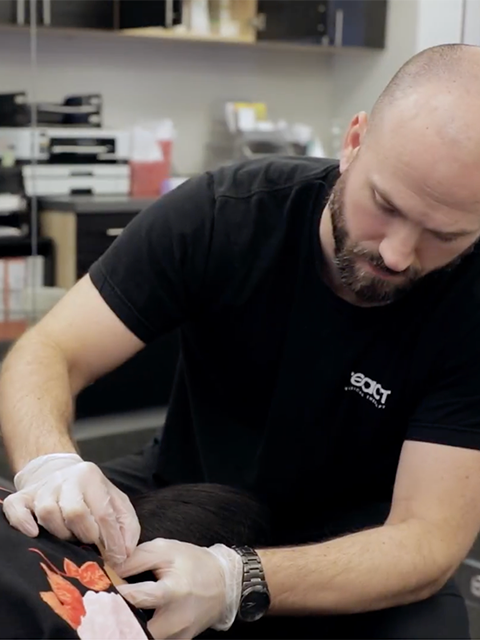Dry Needling
How can dry needling help relieve trigger point pain?
How can dry needling help relieve trigger point pain?
Dry Needling can help:
Relieve muscle restriction that is not achieved with other hands-on treatment
Be used as another way to
address your muscle and joint pain
Improve muscle activation/restore function to areas of weakness

Muscular trigger points (sometimes called “myofascial trigger points” or “knots”) are a commonly overlooked cause of acute and chronic musculoskeletal pain. Trigger points are regions of disorganized muscle fibers. They form when you overuse your muscles and can present with exquisite tenderness, and referred pain in distant, seemingly unrelated areas. These referred areas of pain can range widely in size. If you look at the picture, you can see that gluteal trigger points can cause pain all the way down the leg.
Through dry needling, your physical therapist can help manage those trigger points. Hitting them with an acupuncture needle (1/8 the diameter of the needle your physician uses) can cause an involuntary “twitch” to disrupt the “knots”. When paired with twisting and pulling of the needle, can get to the root cause of the formation of the trigger point and decrease pain. Combining these techniques with mobility, strengthening, and flexibility exercises to retrain your movement patterns and decrease overuse of the muscle can lead to long-term improvements in your symptoms.


All in all, dry needling is a safe and potentially valuable adjunct to your usual physical therapy. Working out those trigger points can ultimately lead to a decrease in pain, improvement in muscle function, improved functional mobility, and improved performance. Dry needling’s benefits occur not only at a local musculoskeletal level, but at a whole-body nervous system, hormonal, and systemic level. As dry needling becomes more widespread, further research is being done to explain its many benefits.
Dry needling is offered at all 5 of our React Physical Therapy locations.